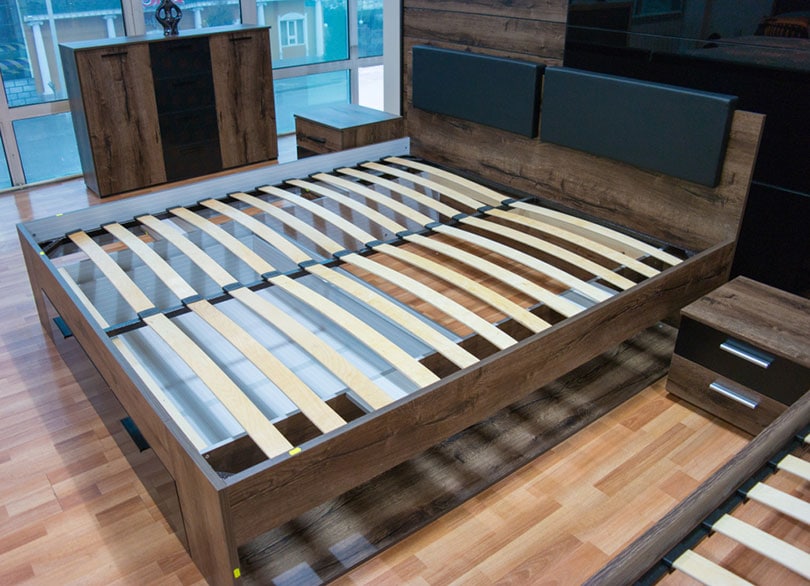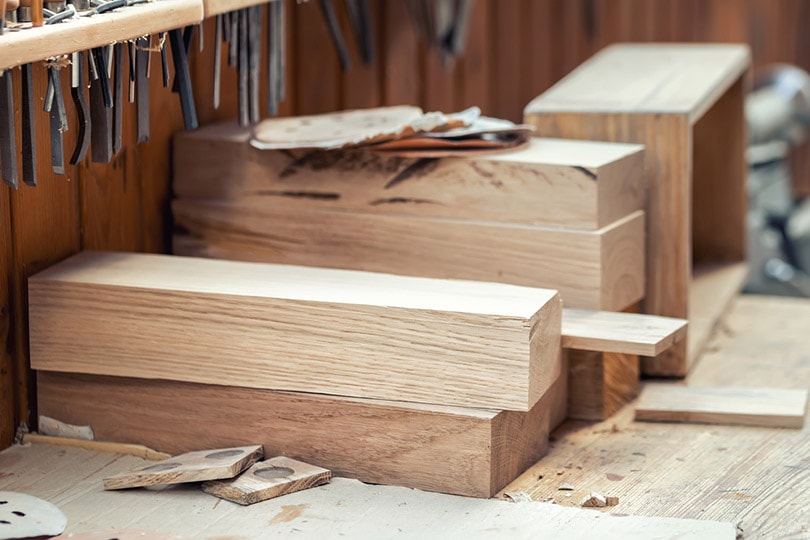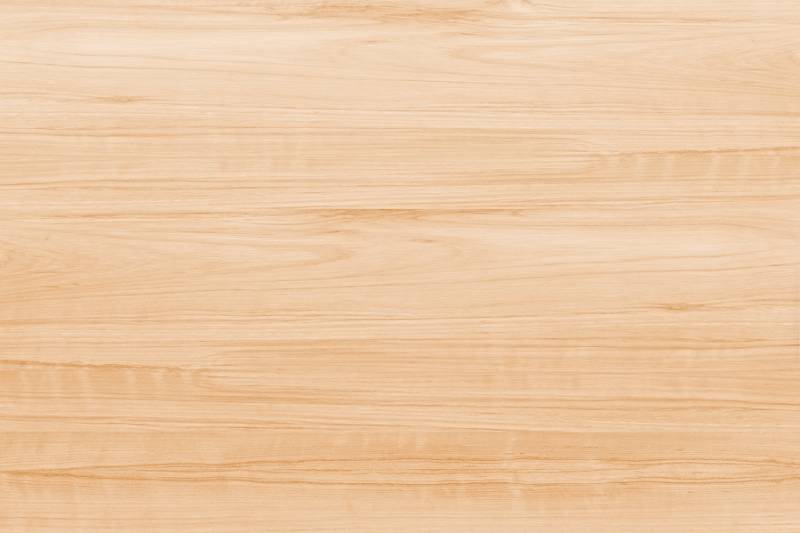What Is the 8 Best Wood for Bed Slats? (With Pictures)
-
Pete Ortiz
- Last updated:

If you are building a bed, it’s essential to install bed slats. Bed slats support the mattress above to make the bed comfortable and suited for your spine. Selecting the right wood for bed slats is imperative. If the wood is too soft, it will warp over time, which changes its shape. Some types of wood are more suitable for bed slats than others, and the price tag varies. Below, we’ll discuss the eight most popular wood types for bed slats.
The 8 Best Woods for Bed Slats
1. Douglas Fir
| Wood Type: | Softwood |
| Best For: | Budget beds with reliable framing |
Douglas Fir is considered one of the most popular types for making bed slats. It has a vertical grain and high resistance to warping. This makes Douglas Fir wood incredibly durable, which explains why it is used as bed slats frequently.
Better yet, Douglas Fir is pretty affordable, too. You shouldn’t have difficulty finding Douglas Fir wood at a lumber yard near you.
- Resistant to warping
- Durable
- Affordable
- Not overly durable
2. Oak

| Wood Type: | Hardwood |
| Best For: | Heavy-duty beds |
Oak is one of the most popular materials to make bed slats from. Both red and white Oak works perfectly. Oak is incredibly durable, stiff, and durable to regular wear and tear. Bed slats made from Oak will last a long time.
The only downside to Oak is that it is slightly more expensive than the other woods on this list, especially Douglas Fir. At least you should be able to purchase Oak pretty easily at any carpentry or hardware store.
- Heavy duty
- Produces long-lasting beds
- Easy to find at stores
- Expensive
3. Hickory
| Wood Type: | Hardwood |
| Best For: | Supporting heavy materials |
Hickory is much like Oak. It is very durable and results in heavy-duty bed slats. It is lightweight at the same time, making it easier to handle and cut. This makes it a favorite for durable queen- and king-sized beds.
The downside of Hickory wood is that it is expensive, and it isn’t as easy to find as Oak.
- Heavy duty
- Produces long-lasting beds
- Relatively lightweight
- Expensive
- Not as easy to find as Oak
4. Yellow Pine
| Wood Type: | Softwood |
| Best For: | Bearing heavy weight |
Yellow Pine is typically the bed slat material of choice for king-sized beds. It has a firm grain, allowing it to bear a lot of weight. Even though it is a softwood, it is much more similar to hardwoods in terms of grain and durability.
The only difficulty in purchasing Yellow Pine is that it is critical to select Yellow Pine as opposed to another Pine variety. Other Pines are not going to be suitable, like the Yellow Pine. This can make it challenging to find the right material depending on where you live.
- Very strong
- Great for bearing heavy loads
- Cannot be replaced with other pine varieties
- Can be difficult to find at stores
5. Spruce
| Wood Type: | Softwood |
| Best For: | Budget beds |
Spruce is a softwood that is easy to use and manipulate. It is often chosen because of its affordability and availability, but Spruce is not the most reliable material. It’s vital that Spruce slats are thick because they can dent and break easily.
- Affordable
- Easy to find
- Easy to work with
- Not very strong
- Easily dented
6. Birch
| Wood Type: | Hardwood |
| Best For: | Light but strong beds |
Birch is a prevalent material to make bed slats from. It is lightweight but still strong, meaning it is known for bearing a lot of weight over many years. It can be expensive, but it’s worth it.
If you decide to select Birch, it’s imperative that you select hardwood Birch slats because they can also come in various types.
- Strong
- Lightweight
- Can carry a heavy load
- Expensive
- Must select hardwood birch
7. Ash
| Wood Type: | Hardwood |
| Best For: | Easy to work with |
Ash is considered a very versatile wood. It is a favorite among carpenters because it is easy to work with. Its attractive color also makes it aesthetically pleasing. It isn’t the most popular for bed slat purposes, but it certainly isn’t a bad choice.
It can be a bit expensive for bed slats, especially considering it isn’t as durable as Oak and some similarly priced woods.
- Versatile
- Easy to use
- Attractive
- Expensive
8. Beech

| Wood Type: | Hardwood |
| Best For: | Luxury, high-end beds |
The last wood on our list is Beech. Beech is often selected for luxury bed slats because they are highly durable, strong, and dense. In comparison to other hardwoods, Beech is the most reliable.
Part of the reason why Beech is only used for high-end beds is that it adapts to weight better. Especially if you select slightly curved slats, Beech beds can last a long time but are very expensive.
- Produces the best beds
- Adapts to weight
- Highly expensive
How Many Bed Slats Does My Bed Need?
The number of bed slats you need depends entirely on your bed and its size. The easiest way to determine how many slats you need is to look below at the standard bed sizes.
| Bed Classification | Standard Size | Number of Bed Slats |
| King | 76 x 80 in | 20 slats |
| Queen | 60 x 80 in | 20 slats |
| Twin | 75 inches long, variety of widths | 16–18 slats |
You will likely want to consider other factors as well, such as whether you need solid or sprung slats, if you want additional center support, and how many people will be sleeping in the bed at once.
- Related Read: 15 Free DIY Bed Frame Plans [All Sizes]
Conclusion
Whenever you select the best wood for your bed slats, you want the wood to be durable and worth the money. At the same time, you want it to fit into your budget so that you aren’t spending a fortune just on the bed slats. If you are on a budget, we recommend using Douglas Fir, but Oak is the better option if you have a little money to spend. If you don’t want either of these types, the six other options listed in this article are also great.
Featured Image Credit: Alexandr Serebrynnikov, Shutterstock
Contents



